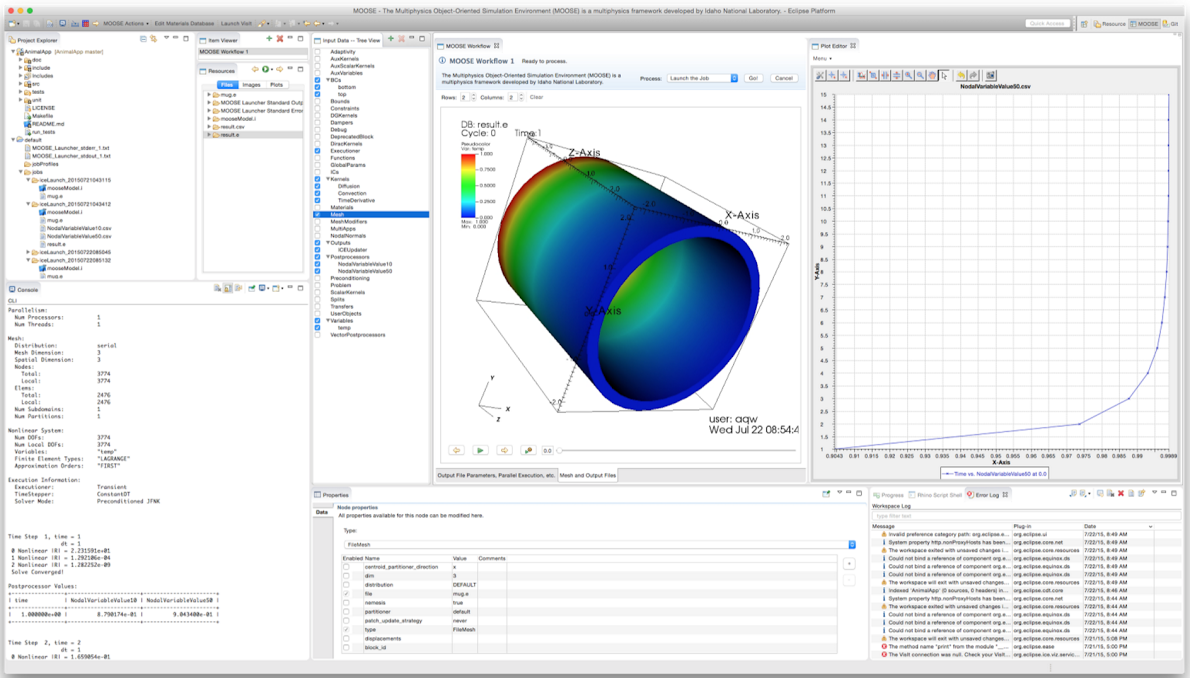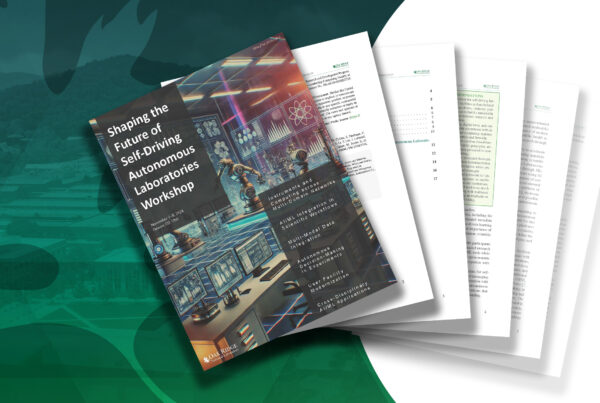
Users came together at the Eclipse User Group and Development meeting to learn about Eclipse’s various open-source software tools. ORNL researcher Jay Jay Billings led the design of the Integrated Computational Environment, shown above working with a 3-D convection problem using the Multiphysics Object-Oriented Simulation Environment (MOOSE) framework.
Two-part meeting helps educate users on Eclipse tools for improving workflows
Supercomputers are as diverse as the many public and private organizations that house them. Researchers using high-performance computing (HPC) for scientific discovery often must learn several different computing languages to run simulations effectively on more than one supercomputer.
The US Department of Energy’s (DOE’s) Oak Ridge National Laboratory (ORNL) has long been a world leader in HPC, and staff members are working to ensure that research runs smoothly not only on ORNL’s flagship supercomputer, Titan, but also on various other computing environments.
“Our goal is to make the lives of our users easier,” said ORNL researcher Jay Jay Billings, who got involved with the Eclipse community of open-source software solutions to improve users’ experiences on HPC resources.
Essentially, the Eclipse organization is a collective of industry, academic, government, and nonprofit entities working on open-source tools. The Eclipse Platform—a collection of frameworks and services that supports the use of Eclipse software on computing resources—is the largest part of the Eclipse Ecosystem, although numerous new projects in science, location technologies, the Internet of Things, and other working groups have appeared in recent years.
In 2013, Billings attended EclipseCon, the organization’s annual conference, and increased his involvement with the group. He became the chair of Eclipse’s Science Working Group and is leading development of the Integrated Computational Environment (ICE).
By developing ICE, Billings is creating a way for users to drastically simplify workflows for HPC applications. ICE allows researchers to spend less time learning various programming languages and instead focus on scientific discovery.
“When we build these large modeling and simulation tools, many can be difficult to use,” Billings said. “We as developers need to do some work to make these tools easy to use by people who didn’t write them.”
ICE helps users by streamlining four primary tasks: generating inputs, launching and monitoring jobs, analyzing and visualizing data, and managing data. In addition, ICE is cross-platform, meaning Titan users can run jobs from their Windows, rather than Linux, machine.
ICE is an immense tool—roughly 500,000 lines of code. Part of Billings’ strategy for improving ICE has been to break the large tool into individual projects. ICE’s visualization tool, for instance, has become the Eclipse Advanced Visualization Project. Users who need only visualization support can run just this component.
The goal of these projects is creating easy-to-use, adaptable, open-source software for scientific discovery. To help realize that goal, Billings organized the Eclipse User Group and Development Meeting on April 14 for local Eclipse users. The event informed users about Eclipse tool development projects and taught researchers how to extend Eclipse support plugins to their various codes and how to use the visualization tools.
Billings said that the turnout—31 participants—and enthusiasm for the meeting set the stage for future workshops. For the moment, though, the team is working primarily on training tools to get more users acclimated to Eclipse. “We’ve been developing a lot of training materials, and we’ve done really well with that this year,” he said. “I do see that we’ll have more local training opportunities in the future.”
For user support staff at the Oak Ridge Leadership Computing Facility (OLCF), a DOE Office of Science User Facility located at ORNL and home to Titan, training for Eclipse is invaluable. “We are so glad to have collaborators to help improve workflows for our staff and users,” said OLCF user support specialist Fernanda Foertter.
Billings added, “We have hundreds of users around the world, but our local developers and users are some of our greatest assets.”
Oak Ridge National Laboratory is supported by the US Department of Energy’s Office of Science. The single largest supporter of basic research in the physical sciences in the United States, the Office of Science is working to address some of the most pressing challenges of our time. For more information, please visit science.energy.gov.





